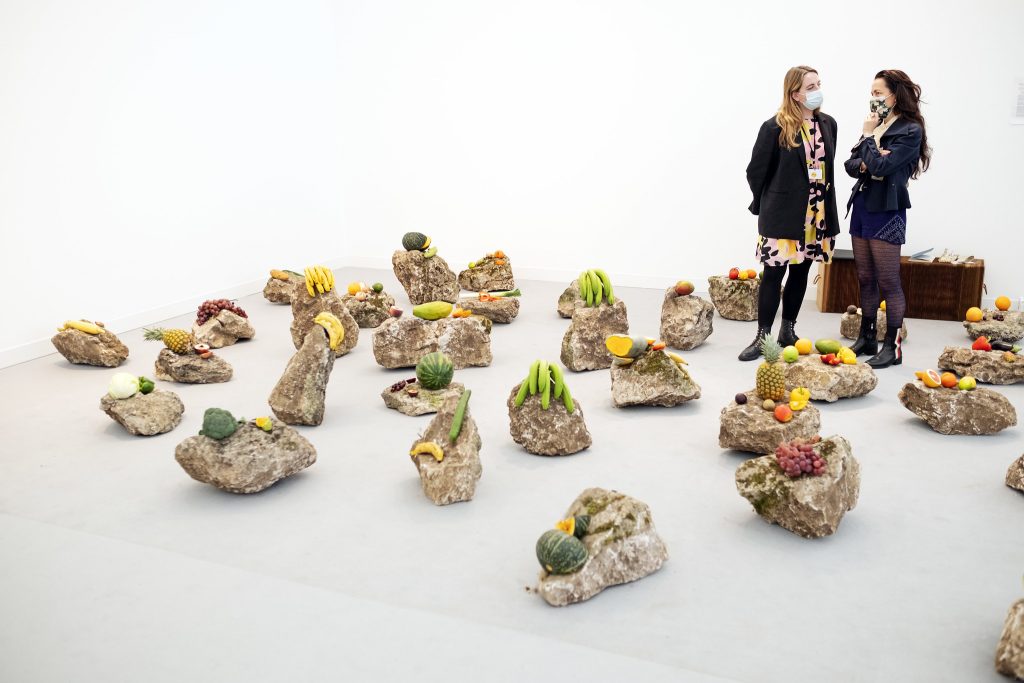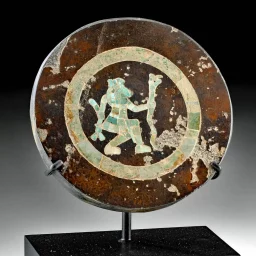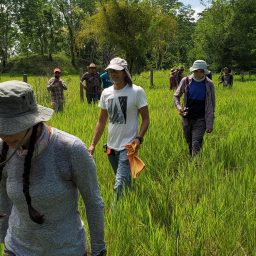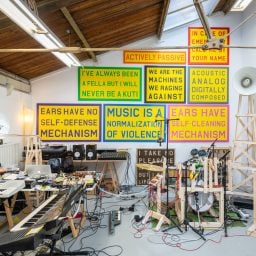In a first for the institution, Tate has acquired custodianship of an artwork—as well as the Mayan ritual needed to install it.
Purchased at Frieze London in a deal brokered between the Tate Fund, the artist Edgar Calel, the Kaqchikel people, and his gallery, the museum has agreed to not only purchase custodianship of the installation, but also support the peoples whose ritual completes it.
“I am thankful to our ancestors for giving us the license and allowing us to spread their knowledge and wisdom in up to seven different places across the globe,” Calel told Artnet News, referring to the seven versions of the work, including Tate’s, a number that’s symbolic of the seven stars in the Big Dipper constellation. “And I’m thankful that Tate will be the first institution to have the opportunity and permission to take on the custodianship of the piece for 13 years, a period in which they will be able to disseminate the lessons embedded within it. As Maya Kaqchikel people, we feel happy to be able to share our responsibility of being the guardians of this knowledge.”
The work was a talking point at Frieze, where it was installed in Proyectos Ultravioleta’s corner booth in the Focus section. On view was a number of stones with fruit laid on top, a work titled The Echo of an Ancient Form of Knowledge, (Ru k’ ox k’ob’el jun ojer etemab’el) (2021). A series of drawings, “Some Two or Three Offerings for Our Ancestors 29 (Jun Kio Oxi qi Munib al ri qatit qa Mama)” (2021), hung nearby. (Tate acquired the drawings on a permanent basis.)
The Guatemalan artist’s work, which was conceived through many iterations, was never intended to be sold, according to dealer Stefan Benchoam. So when the call from Catherine Wood and the Tate Fund team came asking about it, he wasn’t sure an agreement would be possible. Eventually, over a series of conversations, they came to an agreement based on Mayan thinking and custom, whereby ideas of ownership are different. Now, Tate will have custodianship of the work for 13 years, a number that represents the 13 joints in the body.
As part of the agreement, Tate paid the artist for the work and will make a donation to a Kaqchikel cause of Calel’s choice.

The Echo of an Ancient Form of Knowledge, (Ru k’ ox k’ob’el jun ojer etemab’el), 2021. Photo courtesy of Frieze
“We are thrilled,” Proyectos Ultravioleta founder Benchoam told Artnet News. “What’s exciting about it for me is that they’ve come over to the Mayan way of thinking and the Mayan way of doing things, and they’ve conducted this exchange on those terms entirely.”
There are many instances where artists have worked with ritual, cosmology and indigenous practices, but Calel’s work is unique in that the ceremony needed to complete it is not performative; it is preparatory and private. The work cannot be considered finished until the ritual is performed by members of the Kaqchikel. If Tate needs to perform it at any point, Calel can do it personally, or he can choose someone else in his stead.
“It sits in a very particular place in between artwork and also altar. So it’s in between art and spirituality,” said Benchoam. “It’s just a fact that it’s very easy for these works to lose a lot of their meaning if they’re just a subject through Western thinking, or canon, or institutions. So it’s all about finding the right way to kind of preserve the artistic, conceptual, and spiritual integrity of the work.”
The Tate said in a statement that after its 13-year custodianship of the work ends, “a new agreement will be made with the artist and his community, either to renew this custodianship, to pass it on to another institution, or to return the elements of the work to the earth.”










